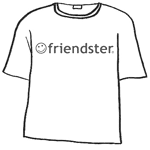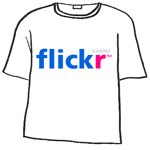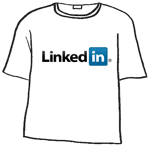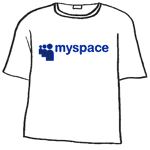


Six Apart, maker of MoveableType and TypePad, has apparently been recalibrating their product development away from targeting professional web developers like me and towards the massive “teen/tween” market. TypePad was the first step in this direction, but now they’ve been working on a new social networking app called Vox which is obviously designed to enter the MySpace arena.
Khoi has been test driving Vox over at Subtraction, where Jeff Croft expressed a very interesting concern about the crowded social networking marketplace:
Does MySpace’s early lead mean it’s the final winner?
I fear so. One of the interesting things about social software from a business perspective is the “accidental lock-in” that occurs with it (perhaps it’s not actually an accident anymore, but it certainly was at one time). What I mean is this: I’m locked into AIM, even though I don’t believe AIM tried to lock me in. They’re not keeping me from getting my data out, they’re not penalizing me for switching — they’re not holding me back at all. The reason I’m locked in is that all of my friends are on AIM. I could switch to Google Talk or Yahoo Messenger, but then I’d have no one to talk to. Same thing goes for Flickr. Is a better photo sharing site came along, I’d still have to stick with Flickr, because that’s where all my friend’s photos are. Social software becomes exponentially more valuable if you’re friends are on it, which makes switching away from what you’re on very hard.
While I have in the past shared Jeff’s concerns about “lock-in” (I have, for example, been reluctant to invest much time tagging my bookmarks in del.icio.us), I’m not sure I agree that this lock-in effect is really a problem at all. I don’t think it’s a problem for most consumers who want to try new social networks, and I don’t think it’s a problem for entrepreneurs who want to get into the social networking business.


This is because of two factors:
- Social networks are brands. They are fashion statements, cultural moments, and temporary tribes. People will try new fashions in a heartbeat, and they will drop the old ones just as fast. What makes one brand succeed and another fail has more to do with the fickle finger of fate than it does with killer features or better quality.
- Brands are not mutually exclusive. Just as you can listen to both Coldplay and Outkast, or eat at both Burger King and Starbucks, you can have a social network at MySpace and Vox. They may have different characters and different tastes, but you can have both. I think younger people eare especially able to do this, perhaps because they see their favorite brands as temporary investments from the beginning, and they are incredibly open and flexible to rapid and even gratuitous change.


For example: MySpace, as big as it is, could see a devastating mass exodus in a matter of months even if no clear MySpace killer comes on the market, simply because the community happened to get tired of the brand. Alternately, a new behemoth social networking site could emerge from the web and become even more massive than MySpace — without hurting MySpace at all.
This is because most of us already happily and successfully manage a large number of online identities. I know plenty of people who have AIM, Yahoo, and MSN instant messenger accounts, and who use them all (via GAIM, for example) to reach different circles of friends. SixApart’s very own Anil Dash has ten, count ’em, ten web sites, each dedicated to a different tribal or cultural aspect of his online identity.
No permanent home, but not homeless.
It’s probably foolish to hope that any one social network can ever be your permanent home. The “home” metaphor, in fact, is flawed. A better metaphor might be a “t-shirt”, something you can just take on and off to show support for your brand for that moment in time.
I’ll bet that almost anybody who has ever cultivated one social network probably has at least one or two others as well, in addition to the countless other online identities they maintain.
For example, I have social network accounts all over the place, some old some new, some dormant some thriving. My Friendster profile has already gone to pasture, and I haven’t checked Ryze in a year. But LinkedIn, Flickr, and del.icio.us are becoming more useful and meaningful to me every day. I have an AIM buddy list, a Technorati account, profiles and avatar icons on countless message boards, several mutiplayer game identities, and Amazon and Netflix media recommendation profiles. None of these networks overlap. This blog allows me to form yet another personal social network, and it is largely disconnected from everything else.
And as nice as it might sound, I maintain no hope that I will ever connect my many networks to each other. Nor do I plan to rely too heavily on any of them, or invest too much of my psyche in any of them, because I know full well that once something better or even just something newer comes along, I and everyone else will simply try the new thing and quite likely forget about the old (when was the last time I checked my Habbo Hotel account?). I think most people have reached the same conclusions, no matter how much investment they’ve put into their current social networks.
People like Jeff, Khoi, and I, who have both personal blogs and lots of technical skill, think that it’s essential to our online social networking lifestyle that we maintain total control over our online presences. The idea of having ten different haphazard social network profiles at one time, occasionally allowing one of them to decay into oblivion, may seem weird to some of us. But as countless people have observed about MySpace, it’s not about control and structure, it’s about freedom and informality.
Comments
2 responses to “Social Networks are Brands”
“Six Apart has apparently been recalibrating their product development away from targeting professional web developers like me and towards the massive “teen/tween†market.”
I can’t disagree with this statement strongly enough. We’re a company that’s about *blogging*. In all its forms. We’ve got a new version of Movable Type (3.3) in beta now, along with Movable Type Enterprise, and we’ve got TypePad Business Class on top of TypePad, both of which have seen a number of new features released in just the past few weeks. (Like yesterday’s announcement of Feedburner integration.)
Overall, we’re doing more to build the economy around web design, development, and consulting for blogs than anybody else in the blogging space.
That digression aside, I agree with you very strongly that people have more than one identity, more than one network, and use more than one of those services depending on context. One link I’d probably mention in passing, leaving the rest up to your own creativity:
http://bradfitz.vox.com/library/post/openid-for-vox.html
Hey Anil, thanks for setting the record straight. You can’t blame some people for having that impression, though, as an unusual amount of time (in this industry) has passed since MT has had a major release and a lot of money seems to have been conspicuously spent, especially on the mass-market side of the business.
That said, and in light of the Enterprise + Business Class stuff which I didn’t know about, your point is well taken.